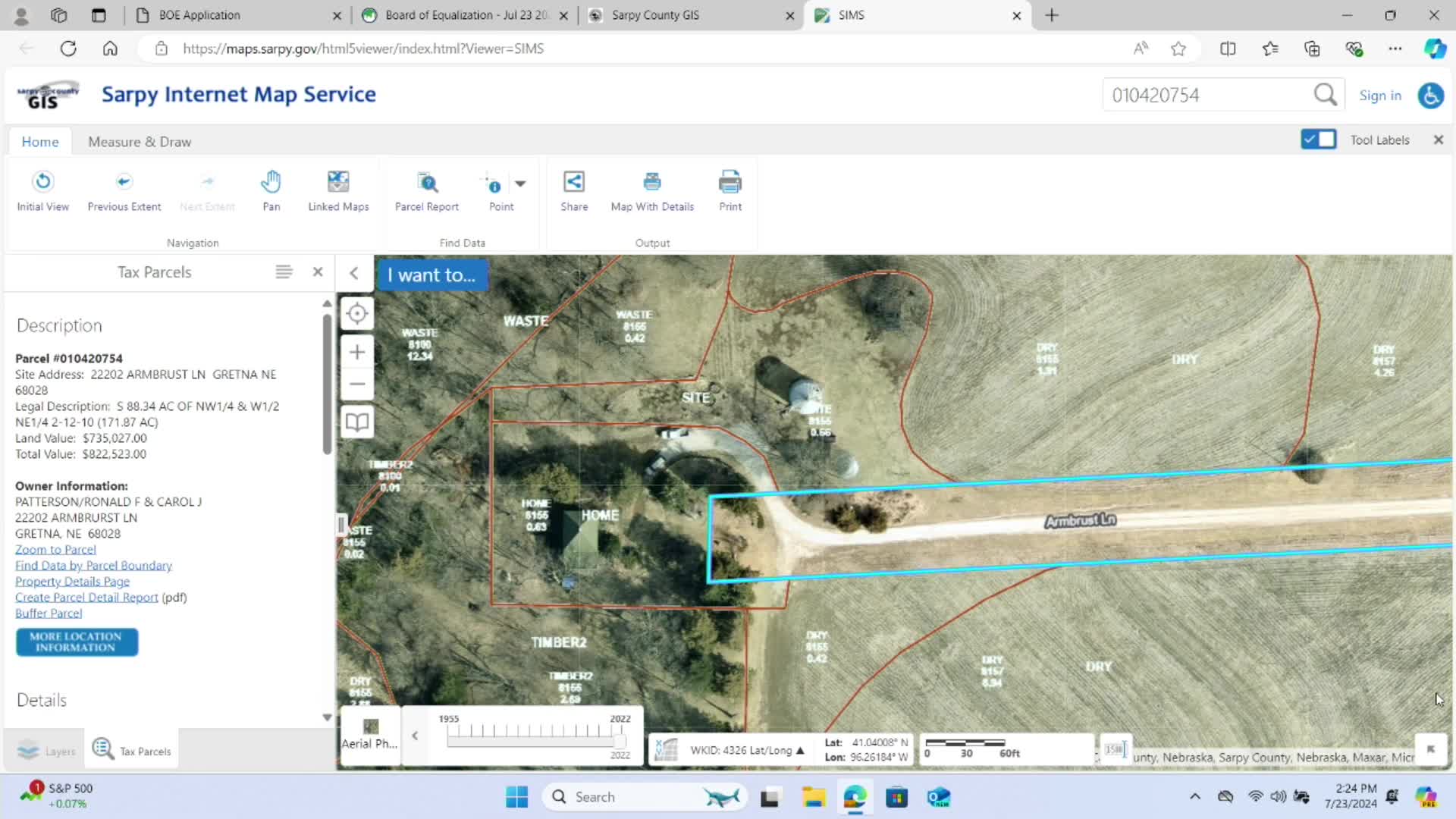Confusion reigns over agricultural land assessment methods
July 22, 2024 | Sarpy County, Nebraska

This article was created by AI summarizing key points discussed. AI makes mistakes, so for full details and context, please refer to the video of the full meeting. Please report any errors so we can fix them. Report an error »

During a recent government meeting, significant concerns were raised regarding the assessment model used for agricultural properties, particularly the requirement that every farm must have a designated one-acre home site. Participants expressed confusion over the implications of this model, arguing that it does not accurately reflect the realities of land use and valuation.
One speaker highlighted the inconsistency in how home sites are defined and assessed, questioning the logic behind mandating a one-acre designation when the actual home site may be much smaller. This discrepancy was described as misleading, especially for taxpayers trying to understand the assessment process. The speaker emphasized that the model appears to force a fit that does not align with the actual use of the land, complicating the understanding of property assessments.
Another participant pointed out that while the first acre of land is given the highest value in the assessment model, the methodology varies significantly across Nebraska's 93 counties. This lack of uniformity raises questions about the fairness and effectiveness of property tax equalization efforts. The discussion revealed a broader frustration with the assessment process, with some participants calling for a more standardized approach to ensure equitable treatment of property owners.
The meeting also touched on historical legislative changes that have influenced current assessment practices, with one speaker labeling the manipulation of property values as fraudulent. This sentiment underscored the ongoing challenges faced by assessors and property owners alike in navigating a complex and often opaque system.
As the meeting concluded, the need for clarity and reform in property assessment practices was evident, with participants urging for a more logical and transparent approach that accurately reflects land use and value.
One speaker highlighted the inconsistency in how home sites are defined and assessed, questioning the logic behind mandating a one-acre designation when the actual home site may be much smaller. This discrepancy was described as misleading, especially for taxpayers trying to understand the assessment process. The speaker emphasized that the model appears to force a fit that does not align with the actual use of the land, complicating the understanding of property assessments.
Another participant pointed out that while the first acre of land is given the highest value in the assessment model, the methodology varies significantly across Nebraska's 93 counties. This lack of uniformity raises questions about the fairness and effectiveness of property tax equalization efforts. The discussion revealed a broader frustration with the assessment process, with some participants calling for a more standardized approach to ensure equitable treatment of property owners.
The meeting also touched on historical legislative changes that have influenced current assessment practices, with one speaker labeling the manipulation of property values as fraudulent. This sentiment underscored the ongoing challenges faced by assessors and property owners alike in navigating a complex and often opaque system.
As the meeting concluded, the need for clarity and reform in property assessment practices was evident, with participants urging for a more logical and transparent approach that accurately reflects land use and value.
View full meeting
This article is based on a recent meeting—watch the full video and explore the complete transcript for deeper insights into the discussion.
View full meeting
